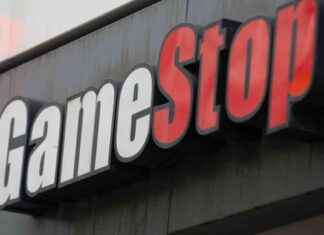MADRID, 17 May. (EUROPA PRESS) –
The Ibex 35 has risen 2% in the week, which has led it to regain the level of 11,300 integers that it lost in yesterday’s session, thus following in the wake of the main global indexes, which have advanced during the last days spurred by the slowdown in inflation in the US.
In this context, XTB analyst Manuel Pinto points out that the disinflation process that the American country is experiencing, together with the fall in retail sales, home sales and a greater volume of unemployment applications, give encouragement to investors in their forecasts of rate cuts by the Federal Reserve (Fed) and now place the start in September.
On the other hand, for the European Central Bank (ECB) and the Bank of England (BoE), the market is already discounting that the first rate cuts will arrive in “just a few weeks”, which has allowed the European indices to reach their historical levels. .
“The Ibex 35 manages to stabilize at 11,300 points, trading at its highest levels since 2015, thanks to the boost from business results,” explains the analyst, who points out that the construction sector has been “one of the biggest beneficiaries” and has beat market expectations, led by Ferrovial and ACS.
In particular, the pharmaceutical company Grifols also stands out, which seems to be “little by little clearing up” accounting doubts, recording profits in the first quarter of the year. Pinto also highlights corporate movements, including the “crossing of statements” between BBVA and Sabadell, or the increase in Criteria’s stake in Colonial. The takeover bid launched by the Swiss group Safra for Árima is also added.
On the geopolitical level, the XTB analyst points out the visit of Russian President Vladimir Putin to his Chinese counterpart Xi Jinping, in what is his first official trip abroad since winning the elections in Russia.
“Both political leaders have warned about the increase in strategic risks derived from the growing tensions between nuclear powers, accusing the United States of trying to violate the strategic nuclear balance,” explains Pinto.
Regarding China, XTB highlights the improvements in the outlook given by the analysis houses thanks to a good evolution of its economy and the effectiveness of the stimuli implemented by the Chinese central bank. “The real estate sector, so penalized in recent months, has recovered ground after the government announced new mortgage regulations, somewhat more flexible than the existing ones. Xi Jinping has also urged local governments to buy unsold homes as part of the measures,” he continues.
The most notable data this Friday was inflation in the euro zone, in which investors were looking for clues as to whether the European Central Bank (ECB) will finally lower rates at its June meeting. Specifically, the rate stood at 2.4% year-on-year in April, in line with the rise in prices observed in March, while that of the European Union (EU) as a whole remained at 2.6%.
In this context, the Ibex 35 has closed at 11,327.7 integers, with an advance in the session of 0.25% with Bankinter as a bullish value, revaluating by 2.37%. They have been followed by Meliá (1.82%), Unicaja (1.77%), Sabadell (1.67%) and CaixaBank (1.37%). Behind them, the biggest falls have been those of Solaria (-3.42%), Colonial (-3.13%), Sacyr (-1.66%), Merlin (-1.64%) and Acciona (-1 ,Four. Five%).
With respect to the rest of the main European stock indices, Paris ended this Friday with a fall of 0.26%, London, 0.22%, Frankfurt, 0.18% and Milan, 0.03%.
In the raw materials market, a barrel of Brent stood at $83.60, up 0.40%, while West Texas Intermediate (WTI) reached $79.61, up 0.48%.
The Spanish bond with a 10-year maturity was trading in the mid-session with a yield of 3.267%, up from 3.219% on Thursday. However, the risk premium stood at 76 basis points. In the currency market, the euro remained stable at 1.0867 dollars for each unit of the community currency.







